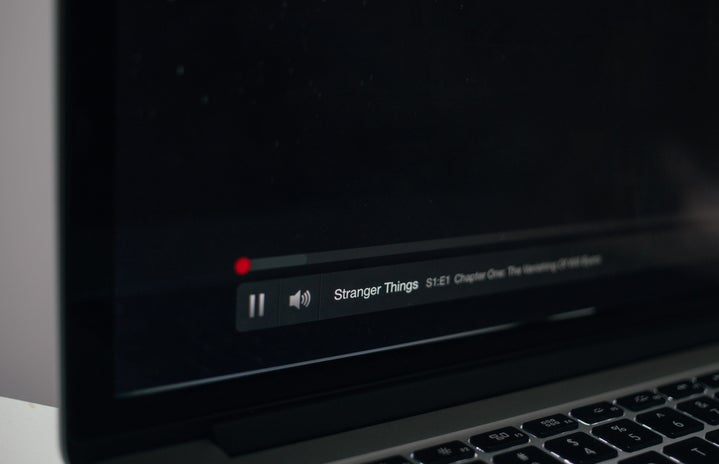If you’ve seen Project Runway, you have to watch Netflix’s newest competition show, Next in Fashion, hosted by Tan France and Alexa Chung! This competition, spanning over 10 episodes, challenges 18 of the most successful and talented rising designers in the world to see who will be the next in fashion. The winner gets $250,000 to put towards their brand, collection, or cause and has the chance to have their collection sold through Net-A-Porter, a London-based company who serves as a marketplace for over 800 luxury designers, including Gucci, Chloe, Balenciaga, Saint Laurent, Isabel Marant, Prada and Stella McCartney. These designers have unique pasts and success with many of them studying at top fashion institutions, such as Central Saint Martins, and have worked with celebrities such as Beyoncé and Ariana Grande. Also, many designers have their collections and businesses which can greatly expand if they won the competition. Each designer has their personality, flare and specialty which can be put to the test in each challenge. The best part of this series is there are no commercial breaks so you don’t have to wait to see the result or winner of any challenge. Every episode includes a personalized runway with guest judges from the industry including: celebrity stylist, Elizabeth Stewart; Director of Fashion Partnerships at Instagram, Eva Chen; and designers such as Tommy Hilfiger. Here’s why you need to watch Next in Fashion.
- Designers have two days to make complete looks.
-
All competitions have some pressure and this competition is no different. Along with the $250,000 at stake, the main pressure comes from the limited amount of time to produce runway looks to impress the judges. Every challenge, except for the finale, had to be completed in less than two days. In this time frame, designers had to: come up with the idea; sketch; get the proper materials; measure the garment based on the model(s)’s measurements; sew the garment; have a fitting with the model to make adjustments; decide on the makeup and hair for the model; and style the look with shoes, jewelry, and other accessories. Sounds easy enough right? Most of these designers usually create looks for their collections in a few weeks. These looks are judged on design, construction, fabric choice and execution, so even though there are only two days to finish the look, the designers have to be able to make something that is perfect to avoid elimination. If you aren’t familiar with the design and construction process, this show is a great way to see what designers go through and you can feel the pressure in your own home.
- Gender and Size Representation
-
Each challenge either allowed designers to choose which gender they designed for, or have to design two looks, one for a male and one for a female model. This pushed many designers out of their comfort zones because they were only familiar with dressmaking or suit designs. The designers had to use their creativity, technical skills and intuition to create looks that they had never done before. This made them better designers because they had to learn how to measure a man or woman and make clothing to flatter the model and show off the design in the best way possible. In one challenge, the designers had to create two looks: one for a man and one for a plus-size woman. The designers had to figure out how to execute their design while providing support and producing a look that makes the models feel comfortable and confident. In an industry that notoriously does not include different sizes, this challenge was a fresh way for designers to understand that women and men come in all different sizes and they should be comfortable to make pieces in different sizes.
- Successful designers go head-to-head.
-
Unlike other competitions where the contestants are looking for their big break, these designers all had success already in the past. Whether they have their own business, launched their collections, or worked with A-List celebrities, these designers are no strangers to success and hard work. This makes the competition much more interesting to watch because it is unlikely that one designer won’t be able to pull something together. The challenge is making something better than the other talented designers. Each person brings their expertise to the competition and one challenge may be in their realm. It can be easy to think the urban wear designer will win the streetwear challenge, but surprisingly other designers have their interpretations of streetwear and can still win the challenge.
- Diverse Mix of Designers
-
As mentioned before, each designer has their own experience in the industry which makes them unique. Another cool factor about the designers is their background, ethnicity, childhood, culture and other components that help shape their identity and designs. Each of the 18 designers had a chance to talk about their background and together they all made up a diverse cast for the show. Designers came from all around the world and incorporated their background into their designs. Influences from China, Korea, Pakistan, Puerto Rico, Mexico, UK, Zimbabwe, and other countries were woven into looks that strutted down the runway and impressed the audience, judges and viewers watching from home.
- Exciting Group Challenges
-
One thing viewers weren’t expecting was group challenges for the show. This made it very interesting to watch because viewers got to see how different designers come together with different styles and backgrounds to make cohesive looks. Some design groups have known each other for many years and found it easy to design while others haven’t met before the show and had to learn how to design from both perspectives. The group pairings brought many challenges as you see some conflict between groups and harmony between others that you may not have expected to see. The group challenges pushed designers to step outside of their comfort zones. Some designers may not know how to create a dress for example but their partner does so they were able to work together and become stronger designers, which prepared them for the individual portion of the competition.
Go watch Next in Fashion! You won’t regret it!



